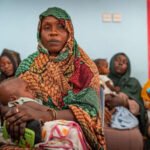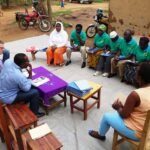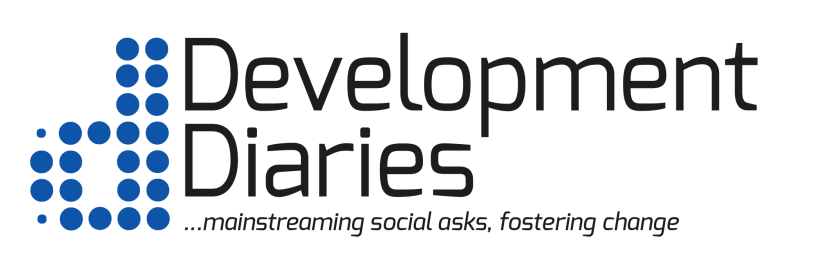Introduction
Over one billion people, according to the World Health Oragnisation (WHO), experience some form of disability, and disability prevalence is higher for developing countries, including Egypt.
Like other people with disabilities (PWDs) in many countries, PWDs in Egypt face a major obstacle of inaccessible transportation facilities – they are overburdened with not being able to move freely and independently, go to work, school, and do other activities.
Data from the country’s Central Agency for Public Mobilisation and Statistics (CAPMAS) shows that 10.5 percent of its over 100 million population have a narrow disability, 2.5 percent have a middle disability, and 0.5 percent have a broad disability.
Tadamun reported in 2013 that buses and public transport systems in the Maghreb nation were usually too crowded to allow wheelers to board, and a dearth of parking options for PWDs.
Article 81 of Egypt’s 2014 constitution is clear on the rights of PWDs. ‘The state [Egypt] shall guarantee the health, economic, social, cultural, entertainment, sporting and educational rights of persons with disabilities; strive to provide them with job opportunities, allocate a percentage of job opportunities to them, and adapt public facilities and their surrounding environment to their special needs’, the constitution states.
To facilitate the ease of movement for PWDs, the country’s Ministry of Transportation, in 2018, signed a cooperation protocol with Engineers Syndicate to implement the Accessibility Code, which works to facilitate the ease of movement for PWDs.
The government, through the partnership with Engineers Syndicate, facilitated accessible pathways, created slopes to facilitate the movement of wheelchairs, particularly next to stairs, and equipped elevators to accommodate wheelchairs.
However, there are still reports of PWDs struggling to access public transportation among other challenges.
A 2020 report by the Arab Organisation of Persons with Disabilities (AOPD) noted that PWDs were struggling to access some schools, hospitals, dispensaries, workplaces, places of worship, cinemas, theatres and restaurants.
In its response to the accessibility challenge, Alhassan Foundation, a non-governmental organisation (NGO) that caters to PWDs, launched the Accessibility for All project.
The project was designed to offer a customised motorcycle that can be driven by wheelchair users, and remodel wheelchair users’ homes, offices and schools to make them more accessible.
The aim of the project was to engender social inclusion by offering accessible rides and helping PWDs move around without being dependent on others to carry them around.
‘Our objective is wheelers’ physical independence and we believe that to achieve this we need to offer accessible infrastructures and accessible transportation’, the organisation’s Projects Manager, Alaa Nady, told Development Diaries.
Review of Literature
Several studies have been carried out to understand how lack of accessible transportation hinders the social inclusion of PWDs in Egypt. A research titled Challenges of social service delivery to persons with disabilities in Egypt: A stakeholders’ analysis, undertaken by Amira Ayman El Refaei in 2016, delved into this problem.
The researcher identified lack of accessibility to transportation and service provision, such as health care and rehabilitation, as key among other factors that contribute to the exclusion of PWDs from social activities in Egypt.
The study recommended a better connection between PWDs and NGOs that provide inclusion and accessibility services to narrow the existing gap in the provision of these services.
Another study, carried out by Menna Allah Mounir, Asmaa Nasr El-Dien and Lamis El-Gezawy, addressed marginalisation of PWDs in Egypt through such factors as poverty, social stigma and discrimination, lack of reliable information and opportunities in education.
The 2017 research, titled Toward Inclusive Design Applications in Recreational Spaces for People with Disabilities in Egypt, which focused on accessibility for PWDs in recreational spaces and parks, urged the government to create a system of supervision for accessibility in Egyptian national parks.
Towing the same line of thought, the Employing People with Disability in Egypt research, published in 2018, declared that PWDs generally suffer in public transport, accessing buildings, and complex procedures to access basic services like health and education.
The researchers, Adham Kassab, Ahmed Elsherbini Orfy, Ahmed Kamal Al-Helewa, and Heba Alsawahli, noted that Egyptian schools remained inaccessible for PWDs and recommended amending the construction code of educational buildings to better accommodate a larger segment of PWDs.
Also published in 2018, the Human Resources Capacity Building in Accessible Tourism in Egypt study held that tourists with disabilities were greatly excluded from leisure activities due to inaccessible premises and negative attitude of staff.
In order to tackle the barriers facing PWDs in Egypt, the researchers, Meril Ibrahem Moris, Heba Atef Alakhras, Neveen Galal Eid, and Mohamed Abdel el rahman Higazy, urged stakeholders to invest in the field of accessible tourism, including training employees to provide safe, enjoyable and comfortable tourism experiences for PWDs.
A similar research by Rana Al Gazzaz posited that the socioeconomic barriers which hinder full participation of PWDs in several activities in Egypt were mainly caused by inaccessible physical infrastructure, poor access to public, social and educational services, unavailability of assistive devices and technologies.
The study, titled Inclusive Employment for Persons with Disabilities Post-Covid-19 in Egypt: Digitisation as the Way Forward, attributed the intersectionality between disability and multidimensional poverty to inaccessible physical infrastructure, inadequate public transportation, and lack of workplace accommodation for PWDs.
The research, published in 2021, recommended the use of remote work, digital technology and flexible work from home schedule to significantly facilitate an inclusive work environment and cut down the unemployment rate that has to do with PWDs.
Process
Alhassan Foundation, it was gathered, carried out an assessment of needs and sought the partnership of different suppliers and consultants. German manufacturers produced bendable, light, high-tech chairs customised to each individual.

Outcome
The foundation has remodelled over 30 homes, schools and venues to be wheelchair-friendly.

‘We provided over 60 accessible motorcycles to wheelers which enabled them to pursue their education, career and/or social activities equally as their abled peers’, Development Diaries gathered from Nady.

‘Through advocacy and awareness sessions, we were able to make a bigger scale impact. For example, many private-sector entities made their entire premises accessible and recruited differently-abled individuals’.
Comparative Analysis
There are other projects in Egypt that also offer accessibility services to PWDs in equally innovative ways.
In 2017, Helm launched a mobile phone app that lists public and private institutions appropriately set up for PWDs. Available in both Arabic and English languages, the ‘Entaleq’ app now features around 200 places, split into nine categories, including cafes and restaurants, companies and factories, museums and historical sites, and sports centres.
The Accessibility for All project, on the other hand, offers physical independence through the provision of custom-made means of transportation for PWDs.
While the project has recorded some milestones, available data on the foundation’s website suggests that more women need to be reached as over 90 percent of PWDs served so far are men.
Contact of the organisation
Alhassan Foundation
5 Ibrahim Khattab Street, Kafr Nassar, Al Haram, Giza
Phone: 0020 1011112666
Email: info@alhassan-fdn.org
Website: www.alhassan-fdn.org
Photo source: Alhassan Foundation







